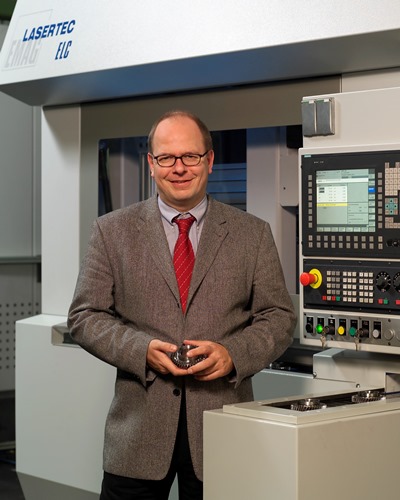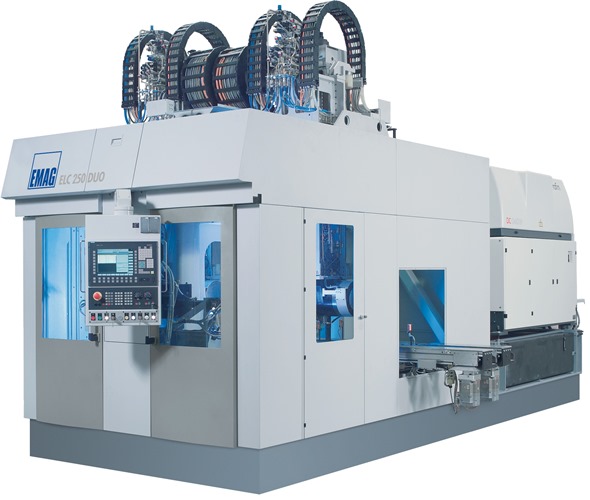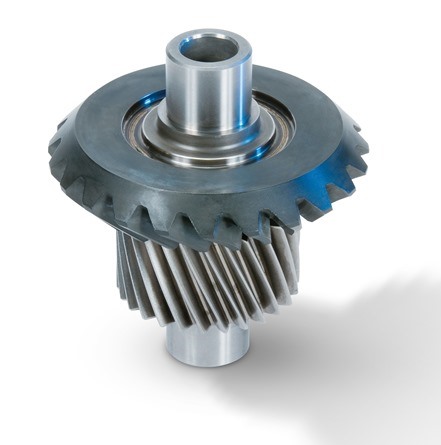Saving energy in the metal processing industry isn't just a question of protecting the environment. For years, energy consumption has been a decisive cost factor capable of surpassing even the investment costs of the machine over the long-term. Moreover, energy costs are always becoming more important: according to the German Association of Energy Consumers (VEA), power prices for medium-sized industrial companies rose 4.5 percent last year. Two current examples from EMAG illustrate some efficient mechanical engineering solutions poised to counter this trend: the ELC 250 DUO welding system and the Platform 2 vertical lathes. They are dramatic examples of the enormous potential savings that can be achieved in a wide range of applications.
Many users pay most attention to the lifecycle costs of a machine when they want to modernize a production area – and with good reason: if users consider only the initial purchase investment, they will later have to deal with unnecessarily high energy consumption. Experts continue to estimate that the energy costs of a machine tool account for more than 20 percent of total costs incurred over its entire lifecycle. "To ensure economical production, many factors regarding use of the systems must be taken into account," explains Dr. Guido Hegener, Managing Director of EMAG Salach Maschinenfabrik. "The factor of energy consumption is becoming increasingly important because we have to expect energy prices to rise significantly in the future and exert an even greater effect on overall costs than currently."
Laser welding: an example of efficient design
What technologies can counter these spiraling costs? An area of application with especially high energy consumption yields a dramatic answer: welding. To meet this challenge, EMAG mechanical engineers developed the ELC 250 DUO, a system solution with extraordinarily low energy consumption. At its core is EMAG's trademark design. Workpieces are picked up by special spindles and moved with high precision during welding while the welding head inside the machine stays fixed in place. "This has a range of advantages. For instance, additional work processes can be integrated into the system. It also provides very high-precision welding. The design also directly improves energy efficiency," says Dr. Andreas Mootz, Managing Director of EMAG Automation GmbH. It starts with the suction system to remove welding smoke. Since the laser is always located in the same place, smoke is only produced in that one place. This means it can be precisely sucked up and removed with little effort – the first advantage.
Less energy consumption, identical performance
The process itself is responsible for most of the savings – EMAG relies on solid state lasers. Compared to traditional CO2welding, welding with solid state lasers ensures remarkably energy-efficient production processes. While conventional carbon dioxide lasers are rated at only eight percent efficiency, the technology developed by EMAG specialists achieves efficiency of around 20 percent. In other words, considerably less power is required to achieve the same optical performance. This massively cuts production energy costs by up to 50 percent. This advantage can be further compounded thanks to the intelligent system design which allows multiple welding modules to be easily arranged in sequence, which in turn enables rapid production of very high unit quantities. They all share the same laser beam source, which is modified along its path as necessary. This increases the service life of the laser while cutting production costs as well. As welding gas isn't required, this represents yet another efficiency and energy factor. "The solid state laser requires no protective gas for many type of applications, which really pays off. This reduces costs and means welding can progress faster," says Mootz.
Lathes: optimized in every detail
EMAG specialists took a similar approach to improve the energy efficiency of lathes. Key technical components have been optimized thanks to a modular platform which serves as a "platform for success". The best examples are the Platform 2 lathes, which include the models VL 2, VL 2 P and VT 2-4. Despite differing axis configurations, the machines are all equipped with the same spindles and technology modules. Energy efficiency was a major concern right from the development phase. The use of a whole series of optimized components, assemblies and software modules ultimately reduces the energy consumption of the new Platform series by some 47 % compared to machines of the previous generation.
This is seen most significantly when it comes to the cooling systems and hydraulic assemblies. Variable-speed pumps in the hydraulic systems dramatically reduce losses within the hydraulic circuit. A secondary effect resulting from the use of variable-speed pumps is that during continuous operation, the hydraulic oil is heated to a much lower temperature than with conventional technology. Through-hole technology also gives users the option of venting the waste heat generated by the amplifier in the control cabinet directly outside. IE 3 motors are optional, rounding out the energy efficiency package of the Platform 2 series.
EMAG trademarks
"At our company, energy efficiency comes standard," says Hegener. "There are a few components and features that are associated with considerably increased investment and we offer these on an optional basis. This gives customers the option of choosing between lower initial investment on one hand, and better energy efficiency on the other." Deciding on a high-performance production system is always the right decision when it comes to energy efficiency, however, since shorter cycle times also cut energy costs per manufactured part.

Dr. Andreas Mootz is Managing Director of EMAG Automation GmbH, located in Heubach,
and is responsible for developing laser welding technology for production applications.

The ELC 250 DUO – compact laser machine for processing differential housings.
This dual version of the ELC is equipped with double spindles.
Its two-station operation makes it possible to load and unload the spindles synchronously with the cycle time.

Laser welding of the differential housing and crown gear
reduces the weight of the component by around 1.2 kilos.
Responsible for the content of this press release: EMAG Holding GmbH



 Germany
Germany